The Montclair, New Jersey-based Women’s Fire Choir formed after the 2016 election. Drawn by equal parts hopelessness and helplessness, I attended a community singing workshop that was held in the small back room of my local independent bookshop. Pressed shoulder to shoulder with about 30 women, our chairs lined up in front of shelves filled with picture books, I sang for the first time in five years. I remember how, when I sang through the blockage that seemed to come up out of my throat, I cried. We all cried.
About three years later, we were still meeting once a week at a Quaker Meeting House to learn songs like “Bambelela” (a traditional South African chant) and “One Voice” (a Canadian bluegrass song) and “Rise Up!” (a contemporary resistance song… not the Andra Day song I am also obsessed with).
Sometimes, we sang at local festivals or at peace vigils. But for me, more than anything else, it was the community built around this all-women a’cappella group that filled me up. The act of all of us, together, making music that reflected our hopes and our values.
Then the pandemic materialized, singers were pinpointed as possible COVID-19 super-spreaders and, suddenly, choirs were flailing about on Zoom, hamstrung at a time when anti-racist rallies were taking place across the country. How would choirs sustain their communities now? How would they do the work they were meant to be doing amidst the swath of social distancing directives?
And with the world in such a state, did it even matter?
Music as a Tool for Communication
“That’s when we do our best work,” says Thea Kano, the Artistic Director of the Federal City Performing Arts Association and the conductor of the Gay Men’s Chorus of Washington, DC (GMCW). “In the face of injustice.”
When I ask Kano what music can accomplish, she tells me that she has thousands of stories in which she’s seen music make a difference in people’s lives.
“We have seen more and more people opening their hearts and minds just because they heard us sing something,” she says.
Kano tells me about a performance the chorus did in Virginia. In between songs, chorus members shared stories of their lives as out, proud people. Afterward, a straight couple approached Kano, in tears. They told her that their son had just come out to them.
“They said to me, ‘You don’t know how healing it was for us as parents of a queer kid to see a group of 30 happy, successful gay people and hearing their stories,'” says Kano. “‘Thank you for giving us that hope and confidence that our kid’s going to be okay.'”
Kano goes on to explain the power of music to communicate a message. “I am not comfortable talking with someone about politics if they have a view of equality that’s opposite from my own,” she says, “whereas I’ll sing all day. That’s my means of communication. And I think for the chorus, for a lot of our singers, that’s their voice. That’s how they find their voice.”
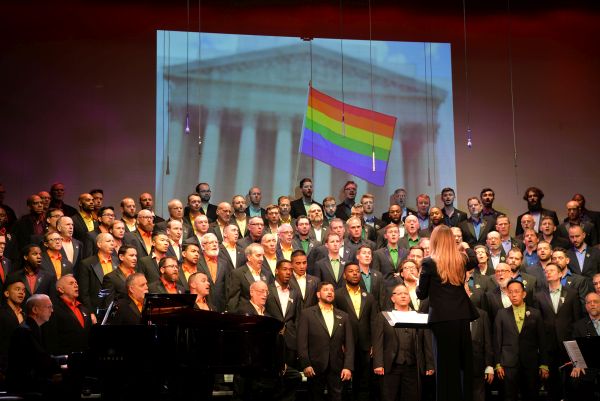
Ben Grosscup, a songwriter and the Executive Director of the People’s Music Network (PMN), feels similarly about music’s ability to convey important messages.
“If you are strategic about the use of storytelling,” says Grosscup, “in how events unfold in a song, you can really break through ideological confines and you can buoy people’s sense of purpose in movements that are counter-systemic and antihegemonic.”
Music as Community
While many of these groups and organizations are of course motivated by their commitment to social justice work, another essential component of their time together is, unsurprisingly, the community they create. Kano tells me that, in the case of the GMCW, the chorus can oftentimes be the only family its members have. Grosscup, meanwhile, speaks to how PMN is a community of communities. And Abbie Betinis, a composer and Executive Director of Justice Choir, speaks passionately about the act of making music together.
“To solve complicated problems, you can’t just yell,” says Betinis, speaking to music’s ability to both focus a message and evoke vulnerability. “You have to really listen to each other. … [Y]ou can get really quiet together — like at a vigil — and still be really powerful. Or you can get loud and shake the rafters.”
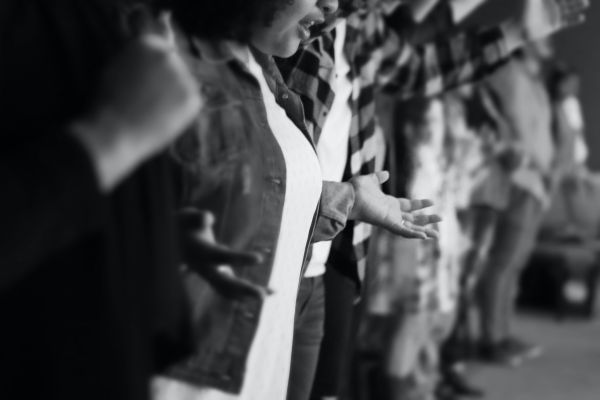
She explains how creating music can be a way to engage collectively in real-time. “Learning songs on the fly, by ear, is the perfect way to simulate the process of powerful and long-lasting change-making,” says Betinis. “Because you first must listen. Learn the song. Sing quietly to yourself as you learn it. Find how you resonate with the material. Make sense of it. Maybe make a bunch of mistakes. Once you learn it, you try some things out, maybe add your own ideas. … It’s such a beautiful experience when everyone comes to it with the willingness to be part of something larger than themselves.”
Music as Power
Then there is the power of music to change the person who is making it. Tamara C. Williams, Founder and Director of Music Beyond Measure, tells me of the journey she took to creating an organization that provides arts-based healing services to survivors of trauma.
She recounts how, in graduate school, where she was majoring in Jazz Studies, she was told that, as a songwriter and a performer, she had to use all of who she was — her culture and her experiences — and put that into her arrangements and her performances. As she internalized this message, she found that the music she created drew out old traumas, forcing her to deal with them more directly.
“It completely changed the way I walked in the world,” says Williams of the work she did at that time. “It was almost like I saw myself for the first time.”
At that point, she wished for a group in which people could use music to heal together, though it would be years before she created it herself. Now, Music Beyond Measure’s flagship program, “Sing Your Story,” allows trauma survivors to explore their experiences by creating their own songs.
Williams speaks of how songwriters can use music to change themselves and others. “That’s when you really see the power of music at work,” she says, “because you have people giving themselves over to a new life. But oftentimes they’re giving themselves over to a chord change. … If the music wasn’t there, would they have the same response? Music is a spiritual vehicle that allows us to process in a whole other way, whether we’re listening or… especially if we’re singing ourselves.”
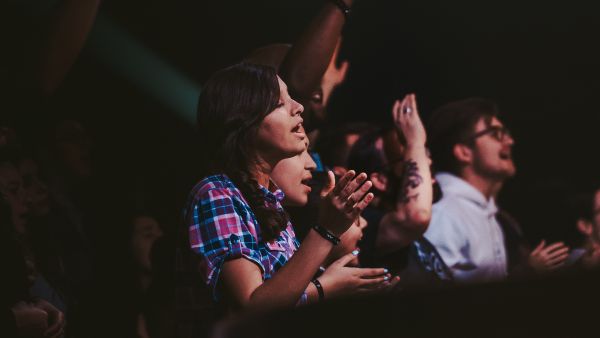
When asked to give an example of a time she’s seen music effect real change, she decides to focus on something simple.
“I saw a woman’s posture change,” she says. “With the way she was able to express herself in her music… She normally sat sort of hunched down and you could tell she was trying to fold into herself. After a couple of workshops, she was sitting up, back straight, chest up, head tall. It’s the pride. Whenever you hear someone say music really changed their life, that’s what they mean. It’s something so visceral that allows us to stand tall both internally and externally.”
Music During Quarantine
When the social distancing directives came down, many groups struggled to figure out next steps. While Zoom has proven a boon in helping people maintain connections during self-quarantine, it’s not perfect. And, well, it’s impossible for groups to sing together while unmuted. The video and the audio don’t sync up. And if you try, you just get a mess of sound.
Still, you can’t tell a social justice choir to stop singing. To stop speaking out. Especially not when messages of love and resistance are needed now more than ever.
In the wake of the pandemic, groups adapted and, when George Floyd was killed in May, those same groups stepped up.
Sing in Solidarity, a socialist movement choir in New York City, put together virtual choir videos and organized weekly phone banks. They remained active on Facebook, one of its members even performing a set on Facebook Live in order to raise music for protestors’ bail funds in Louisville and Minneapolis.
The Resistance Revival Chorus, also in NYC, did an entire rally on Facebook Live dedicated to music with a message. In between individual performances and speeches, they asked for people to donate money to their local mutual aid funds.
Images of choirs singing at protests while wearing masks spread across social media, while even more virtual choirs popped up across YouTube in order to spread messages of hope and unity. Performance groups created new resistance music in response to current events.
Kano tells of how, when Floyd was murdered, the GMCW posted a song to their social media feeds that they felt really spoke to that. It was from a performance they’d done the year before at their Let Freedom Sing concert:
Since then, they’ve been posting songs to their YouTube channel every couple of days.
Betinis tells of how the Justice Choir organized a Juneteenth Solidarity Sing. People all across the country stepped outside of their homes to simultaneously sing the Black National Anthem, “Lift Every Voice and Sing,” in support of Black lives.
Groups like PMN and Music Beyond Measure, meanwhile, have been asking themselves what people need most at this moment. PMN has been hosting virtual song swaps, during which people share the songs they’ve been working on.
“A lot of activist music is about group participation,” says Grosscup. He says that the song swaps allow people to “gather with songwriters of kindred spirit” and gain inspiration for their own work. “We’re creating a lively, consistent space where people can share in an intentional way the kind of politically-inspired music they are creating at this time,” he says.
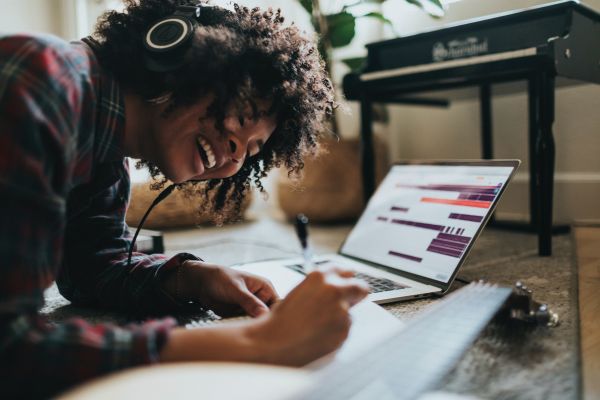
The folks at Music Beyond Measure, for their part, have been focusing on wellness. They’ve continued their songwriting workshops, using a combination of Zoom, focused assignments, and songwriting software that all participants can access. They’ve run online workshops for parents to help them adjust to this new normal. They spent the entire month of May — Mental Health Awareness Month — sharing resources for steps people can take to maintain their mental health.
And with no end in sight for the pandemic, these groups aren’t going anywhere. Kano is already brainstorming how the GMCW might put together virtual performances in celebration of their fortieth anniversary, utilizing a mix of virtual choir recordings, archival videos, and performances from individual members.
I can’t deny that — at a time when I again feel both hopeless and helpless — creating harmony in this one, small way can make all the difference in the world. At least for me. Hearing one of the GMCW outreach groups sing “Rise Up” can make me weep. Making my own mini virtual chorus can make me feel whole.
How has music made you whole? What is your resistance song?

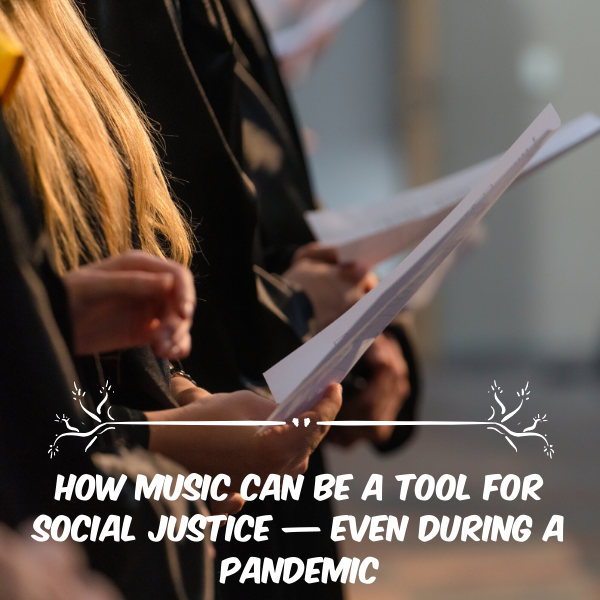

Pingback: My Riot and Riot Grrrl Nostalgia | Feminist Book Club
Pingback: Cozy Winter Reads About Holiday Traditions